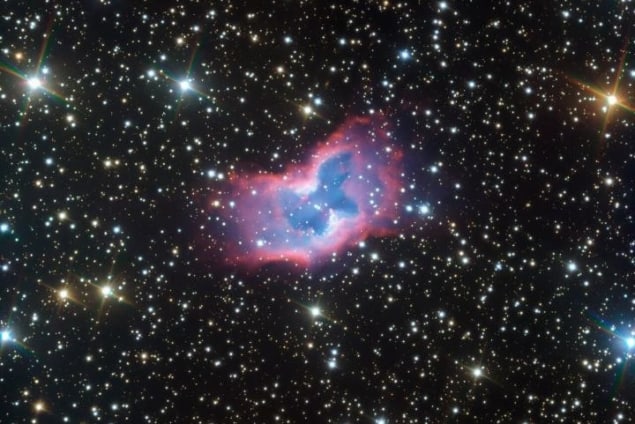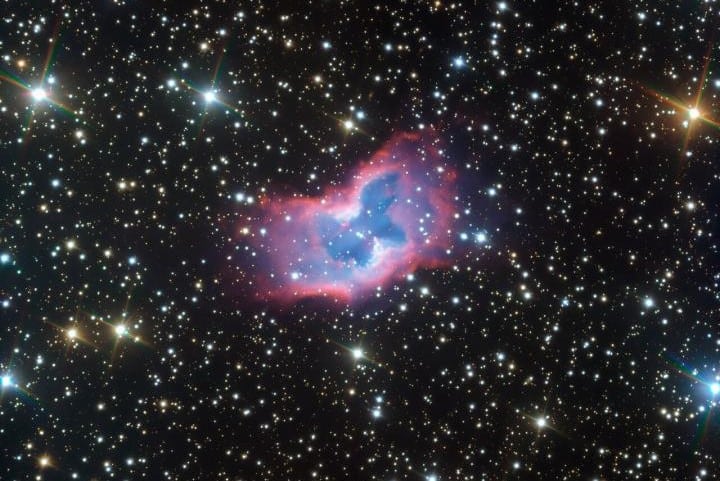
Move over Butterfly Nebula, there is a rival diaphanous object in the sky. Pictured above is the NGC 2899 nebula as seen by the ESO’s Very Large Telescope in northern Chile. Located between 3000-6500 light-years away in the Southern constellation of Vela, the nebula has two central stars. One star has reached the end of its life and has cast off its outer layers. This gas glows in response to radiation from the stars and the object’s two-lobed shape is a result of the second star influencing the flow of gas. The object is several light-years across, and the outer pinkish light is from hydrogen gas, whereas the inner blue light is from oxygen.
A few weeks ago, my colleagues Tami Freeman and Tim Smith were on the Physics World Weekly podcast talking about a Twitter poster session that was being organized by Institute of Physics Publishing – which publishes Physics World.
The session was held over 24 h on 15–16 July and the posters were judged by a panel of leading physicists selected from the editorial board of the journal IOP SciNotes.
Now the winners in seven categories have been announced and they are listed below.
You can look at all of the entries on Twitter using this hashtag #IOPPposter.
It is pretty hot today in Bristol and once I finish this column it would be nice to chill out with a cold drink – preferably in an insulated cup to keep it cool. In his blog Nanoscale Views, the condensed-matter physicist Douglas Natelson describes a simple at-home experiment he did to work out what happens to the performance of a stainless-steel insulated cup after it has been dented. You can review the results in “Kitchen science: insulated cups”.
Unraveling the mystery of spin
“Electron spin explained: imagine it’s a ball that’s rotating, except it’s not a ball and it’s not rotating,” is an apt meme that the mathematical physicist Peter Woit spotted recently in a Twitter thread that ponders the mystery of quantum-mechanical spin.
Writing on his blog, Woit says that thread inspired him “to make a stab at explaining what ’spin’ really is”. You can read that explanation in the blog entry “What is ‘spin’?”.
